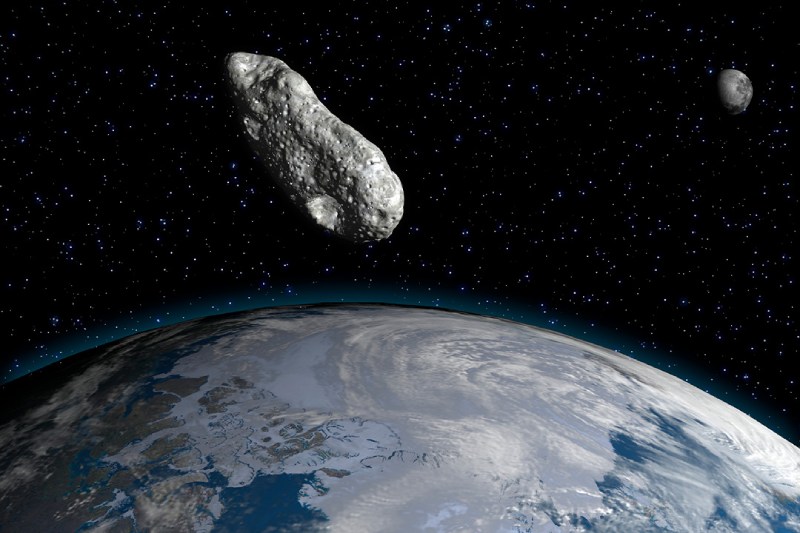Recently returned on a mission to examine the asteroid Bennu, a NASA spacecraft called Apophis—named after the Egyptian god of chaos—has been relaunched to research another asteroid as it approaches Earth’s orbit. On April 13, 2029, the space rock is predicted to pass within 32,000 kilometers of Earth’s surface.
NASA declared on December 22 that it had successfully released OSIRIS-REx to investigate Apophis, an asteroid with a diameter of 370 meters, as it approaches Earth’s orbit.
According to Egyptian mythology, Apophis is a serpent-shaped god who represents chaos and darkness and wants to wipe out humanity. Fortunately, it is not the aim of the asteroid that bears its name.
Similar to Earth, Apophis circles the sun and occasionally comes dangerously close to our planet. The 40–50 million ton asteroid is predicted to approach Earth on April 13, 2029, at a distance of 32,000 kilometers, which will be closer than certain man-made satellites and a first in recorded history.
In five years, weather allowing, parts of the Pacific, most of Africa and Europe, Australia, Asia, and the Indian Ocean may all be able to see Apophis’s passage with the unaided eye.
New mission, old spacecraft
The OSIRIS-REx spacecraft returned to Earth in September following a seven-year mission to the asteroid Bennu. With only 25% of its fuel remaining after traveling 4 billion kilometers, the spaceship was directed to intercept Apophis.
Venus was one of the possible destinations, but the trip to Apophis was chosen. The spacecraft was given the new designation OSIRIS-APEX (Origins, Spectral Interpretation, Resource Identification, and Security – Apophis Explorer) in honor of its new mission.
NASA estimates that the expedition will come with a $200 million price tag.
Apophis differs from “C-type” asteroids, which are high in carbon, such as Bennu, in that it is an asteroid of the “S-type,” made of silicate and nickel-iron elements.
In order to gather as much data as possible, OSIRIS-APEX will approach Apophis’ surface to a distance of 25 meters as the asteroid approaches Earth. “How the surface changes when interacting with Earth’s gravity” is of special interest to scientists, according to NASA’s Goddard Space Flight Center principle investigator Amy Simon in a press release announcing the project.
When an asteroid comes into touch with Earth’s gravitational field, it may cause landslides and earthquakes, which would subsequently churn up stuff. “The asteroid’s orbit and its 30.6-hour day will change as a result of its close encounter with Earth,” NASA stated.
“We know that tidal forces and the accumulation of rubble pile material are foundational processes that could play a role in planet formation,” said Dani Mendoza DellaGiustina, principal investigator of the OSIRIS-APEX mission at the University of Arizona. “They could shed light on how we evolved from the debris of the early solar system to full-blown planets.”
While S-type asteroids make up the majority of known potentially dangerous asteroids (whose orbits approach within 4.6 million kilometers of Earth), Apophis’s close proximity to the planet makes it possible for NASA to conduct planetary defense research, one of the agency’s top goals.
Earth collision is ruled out.
Theories of an apocalyptic collision with Earth continue to be fueled by the 2004 discovery of the Apophis at Arizona’s Kitt Peak Observatory. A user on X wrote, “Apophis is coming, that’s why they’re building their bunkers.”
The asteroid was initially classified as having the highest level ever—4 on the Torino Scale, which rates the danger of impacts from near-Earth objects, like asteroids and comets, on a scale of 0 to 10.
However, new modeling revealed in December 2004, only a few months after the asteroid was discovered, that there was almost no chance of an impact with Earth.
Moreover, Apophis crossed 17 million kilometers from Earth in June 2021, enabling NASA to modify calculations and categorically rule out the chance of a collision.
NASA officially eliminated Apophis from its list of Earth Close Approaches, dismissing a “Don’t Look Up” scenario.
For 18 months following the asteroid’s passage, OSIRIS-APEX will operate in the vicinity of Apophis to examine the alterations brought about by its close proximity to Earth.





